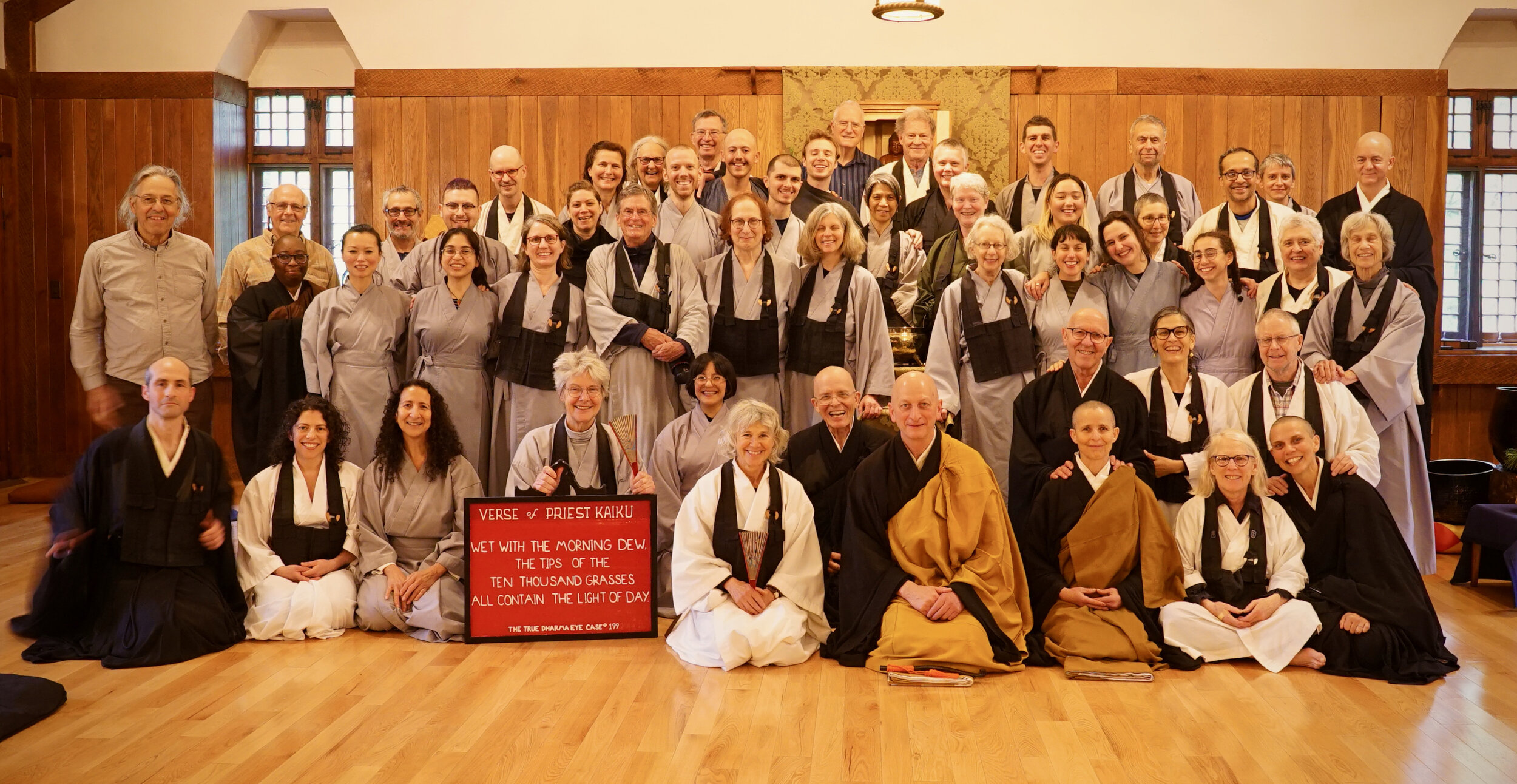Before spring slides into summer, I wanted to share about the last three months which will also explain why there have been so few blog posts. I’ve been on an intense retreat—some of it quarantined in my studio, some of it at Zen Mountain Monastery in the New York Catskills, and some of it, following the spring Old Frog Pond Farm schedule.
I was asked by my Zen teacher to serve as Shuso, or Chief Disciple for the three-month training period, we call Ango. The training period, Ango, dates back to the time of the Buddha. In his time, the year was broken down into three-month periods much like our four seasons. There were two seasons of intensified practice when the community of monks, the Sangha, gathered and practiced together. These periods coincided with the monsoon rains, when it would have been dangerous and difficult for the monks to be wandering the countryside. Instead, they gathered in groves and set up temporary living huts, practicing together and living near their teacher. These intensified three-month periods, called Ango, alternated with the seasons when the Sangha would disperse, going off in the own directions, to beg for food, find shelter, and spend the time in solitary practice.
At Zen Mountain Monastery we practice Ango in the spring and the fall. The Shuso, or chief disciple is chosen by their teacher, and they can be either a lay person or a monk. Their role is to inspire the Sangha with their devotion and commitment to practice. The training period ends with a ceremony where the chief disciple gives their first talk on koan and is then challenged by the Sangha with live questions.
At the end of May, my time as Shuso ended with a talk on the koan, “Dongshan’s Essential Way.” Dongshan was a 9th century Chinese Zen master. The koan is a brief teaching dialogue between a student and their teacher. This koan begins with the student saying, “I cannot see the essential path; I still can’t become free of discriminating consciousness.”
What is this essential path? The student can’t see her way. Is it hidden? Who is hiding it? What is hiding it? And why is this student asking the question right now. Today?
I gave my talk on the last Sunday in May. It was followed by questions from other students, and then congratulatory poems. The ceremony marked the completion of my transition to become a senior student in the order, and the opportunity to now take on a more important role within the Sangha.
Many of you know how much I love Zen practice and specifically, training at Zen Mountain Monastery. A full matrix of activities shape our training: zazen (meditation), liturgy, body practice, art practice, work practice, study of the teachings, and face-to-face encounters with our teacher. Most importantly, it is following the rigorous monastic schedule, putting aside one’s own desires, and joining the community. It is said that being in community is like being in a rock tumbler. We need each other to bump up against, to be polished. However, to put it most simply, Zen training is the study of reality as it really is when we are not confused, when our mind is not obscured by attachments and clinging to that which is not real. We aspire through our practice to move among grasses of this world with equanimity and compassion, to be fully present, to do good and not cause harm.
I haven’t felt that I could write about this rite of passage until it was over. There were moments when I knew for certain my teacher had made a grave mistake. I could not do this. But I also knew there was no way out. Of course I was going to do what I was asked to do. I was going to give it everything I could. And the Sangha was there with their love and their support.
Now that I’ve a little time back home, and have hung up my new white robe and am wearing jeans, t-shirt and work boots, I wanted to share with those of you are curious a little about this rite of passage in the Zen training world. And here is a podcast posted where you can listen to the ceremony or find it on the Zen Mountain Monastery website. If any of you want to talk to me about my experience or about Zen Mountain Monastery, I love talking about it. And if you’d like to join us for morning meditation at the farm, drop me an email and I’ll let you know the details.
I look forward to reconnecting with many of you in person. We’re preparing the grounds for our 15th Annual Outdoor Sculpture Exhibit opening on August 1 with twenty-five sculptors bringing new work on the theme of “Emergence.” We’ve scheduled storytelling events with Fugitive Productions, and Plein Air Poetry returns also on the theme of “Emergence.” The fruit is ripening. It looks like mother nature is providing a bountiful and beautiful crop, and our farmers are working hard to encourage its health and growth.
The verse that accompanied the koan is on the verse board below:
Wet with morning dew
The tips of the ten thousand grasses
All contain the light of day.
Enjoy these last days of spring!
Group Photo after the Ceremony

